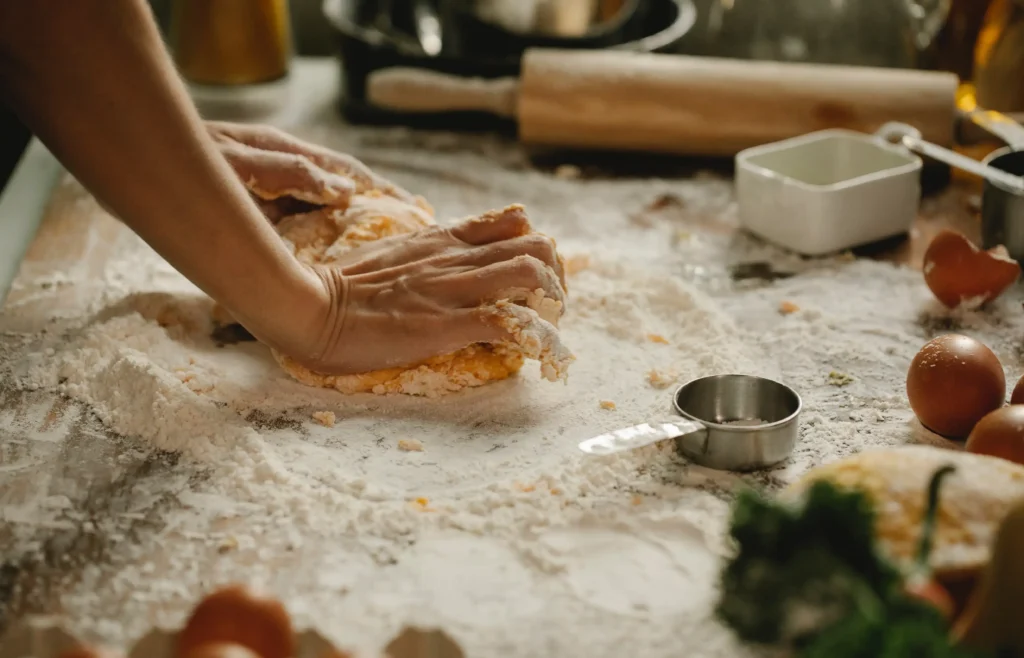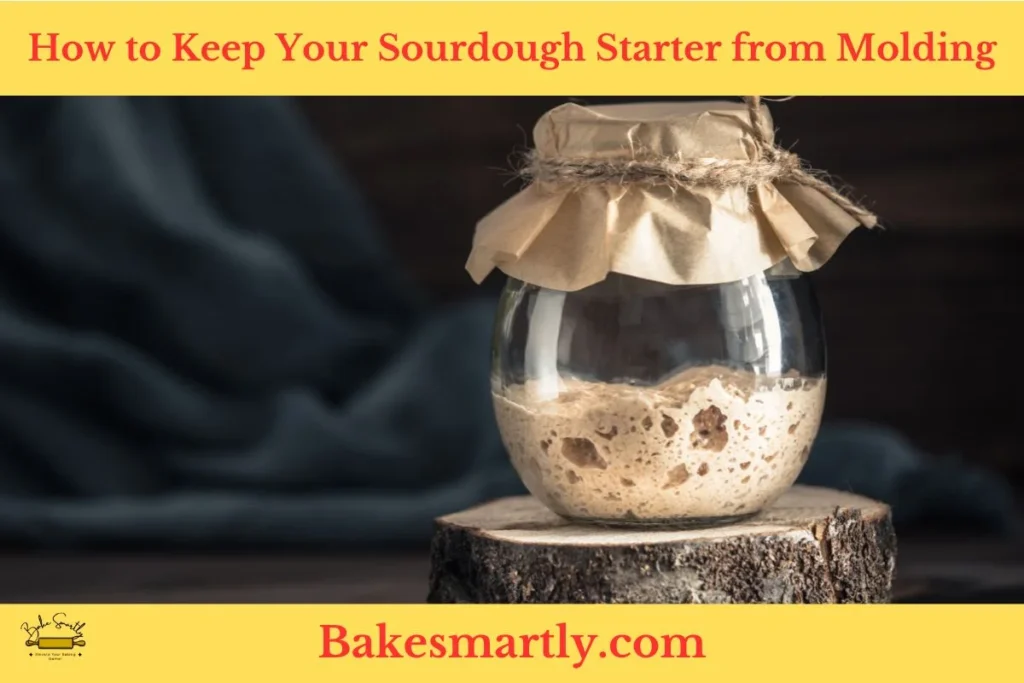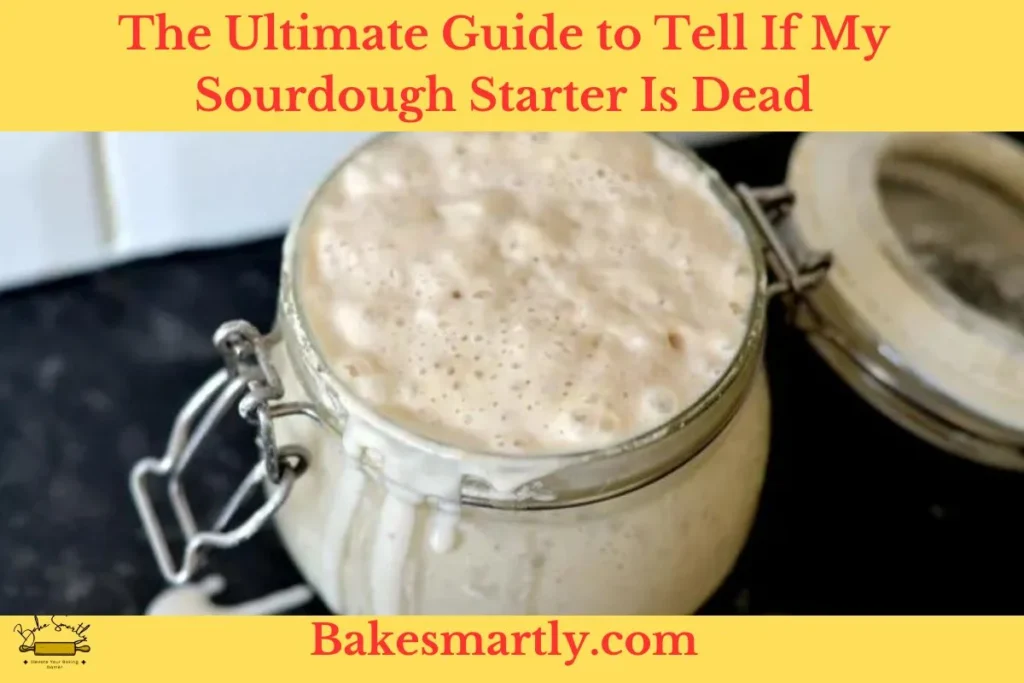
Will Active Dry Yeast Destroy My Sourdough Starter?
Are you a fan of making sourdough bread and curious about how using active dry yeast might affect your sourdough starter? Let’s clear up some misconceptions and get to the facts! In this article, we’re going to take a deep dive into the world of active dry yeast and how it relates to your sourdough journey.
There’s a lot of talk out there about active dry yeast and how it influences sourdough starters. Some people say that adding active dry yeast can mess up the natural fermentation process and lead to a bland-tasting loaf. Others argue that it can be a helpful tool to kickstart your starter or give your bread a little extra rise. But what’s the real story?
Does using active dry yeast actually affect the flavor and quality of your sourdough bread? Come along as we explore the science behind active dry yeast and its connection to sourdough baking.
We’ll debunk common myths, provide expert insights, and equip you with the knowledge you need to make informed choices about your baking techniques.
Table of Contents
ToggleUnderstanding the Differences Between Active Dry Yeast and Sourdough Starter
In the world of baking, where precision and technique really matter, it’s important to understand the differences between active dry yeast and sourdough starter. These two things have unique roles when you’re making bread, and knowing how they’re not the same can seriously affect how your baked goods turn out.
Active Dry Yeast:
Active dry yeast, which is often just called “yeast,” is a type of tiny fungus used to make bread and other baked stuff rise. It’s a product of modern food science, made by drying live yeast cells into small, grainy pellets.
These pellets stay asleep until you mix them with sugar, which wakes them up. Once they’re awake, the yeast eats the sugar and produces gas that makes the bread dough puff up. This whole process is called fermentation.
Active dry yeast is super reliable and easy to find, so lots of bakers, whether they’re pros or just baking for fun, like to use it. It gives you pretty consistent results and is especially handy when you want your bread to rise at a known rate. But the trade-off is that active dry yeast doesn’t give your bread as strong a flavor as the wild yeast in sourdough starters.
Sourdough Starter:
Now, sourdough starter is a whole different deal from active dry yeast. It’s a mixture of flour and water that traps wild yeast and friendly bacteria from the environment around it.
This mixture sits around and ferments for a while, often several days, so the wild microorganisms can grow and develop. As a result, the starter turns into a complex mix of natural yeast strains and helpful bacteria.
This complicated mix is what gives sourdough its special taste, texture, and smell. The wild yeast in the starter makes the dough puff up with gas, just like active dry yeast, but the longer fermentation time and all those different microorganisms give sourdough bread its unique tangy flavor and chewy texture that everyone knows it for.

What Happens if You Add Active Dry Yeast to Sourdough Starter?
If you love baking, you’ve probably wondered what would happen if you added regular yeast to your sourdough starter. It’s a question that sparks curiosity and debate among bakers, and the answer comes down to the balance between tradition and innovation.
- Faster Rising Time: When you mix regular yeast with your sourdough starter, the first thing you’ll notice is that your dough rises much faster. Regular yeast is a real speed demon when it comes to making dough puff up. It quickly turns sugars into bubbles of carbon dioxide, which means your dough is ready for baking way sooner than it would be with just a natural sourdough starter.
- Consistency in Loaf Size and Texture: Using regular yeast along with your sourdough starter can also give you more consistent results in terms of how big your loaf is and what it feels like. Traditional sourdough can be affected by things like temperature and humidity, which can lead to differences in the final bread. Adding regular yeast helps keep the fermentation process on a steady path, so you don’t have to worry as much about the environment.
- Easier for Beginners: If you’re new to sourdough baking, throwing in some regular yeast can make the whole process more doable. Regular yeast is like a trusty sidekick that makes your dough rise reliably and predictably. It gives beginners confidence as they start their sourdough journey.
- Reliable Results in Different Places: Besides being speedy and dependable, using regular yeast can also be a good move in various baking setups. Imagine a professional bakery that needs to churn out loads of consistent loaves. Regular yeast can be a big help in situations like that. But there are some things you should keep in mind when you add regular yeast to your sourdough starter:
- Different Flavor: One of the big downsides of using regular yeast in sourdough is that it changes the flavor. Sourdough bread is famous for its complex, tangy taste, thanks to its long fermentation process and wild yeast. When you toss in regular yeast, that unique flavor gets milder.
- Less Taste Complexity: Sourdough fans love the intricate flavors that develop over time in a well-tended starter. Adding regular yeast can tone down those subtleties, making the bread’s taste less complex.
- Traditionalists Might Not Like It: Some sourdough purists turn their noses up at the idea of adding regular yeast. They’re all about sticking to the old-school ways of making sourdough.
- Weakened Natural Yeast: Over time, using regular yeast can weaken the natural yeast in your starter. This can make your starter less robust, so you’ll need to feed and maintain it more often to keep it healthy.
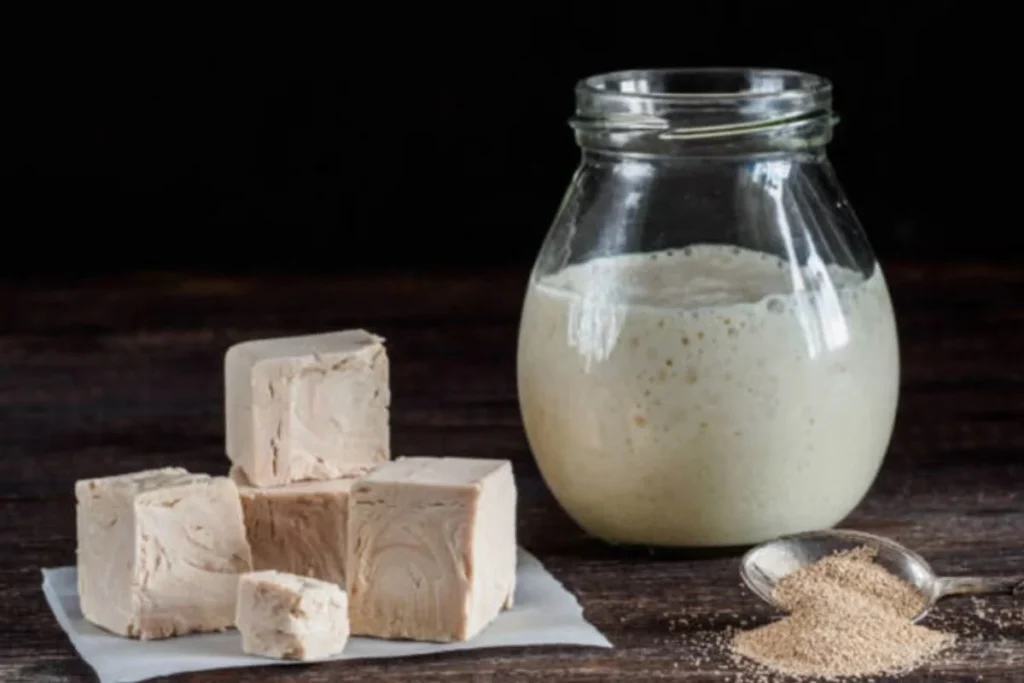
Busting Sourdough Myths | Active Dry Yeast and Your Starter
In this section, we’ll delve into the reality of this belief and explore the peaceful coexistence of active dry yeast and your sourdough starter. We’ll also uncover the benefits and potential flavor impact of using active dry yeast in your sourdough creations.
So, let’s debunk the myths and discover how to make the most of your sourdough journey.
Myth: Does Active Dry Yeast Harm Your Sourdough Starter?
Sourdough fans often hear a common myth that adding active dry yeast to a sourdough starter is like delivering a fatal blow. But this myth needs clearing up because active dry yeast and sourdough starter can actually get along just fine.
Debunking the Myth
Active dry yeast is a different type of yeast compared to the natural yeast in sourdough starters. The main worry with this myth is that active dry yeast will overpower and eventually kill the natural yeast and bacteria in the starter, making it useless. However, that’s not the whole story.
Active dry yeast does ferment more quickly, but it doesn’t necessarily wipe out the natural yeast. Instead, it can work together with it. When you use it in moderation, active dry yeast can assist your starter, providing a reliable way to make your dough rise while still letting the natural yeast add that unique sourdough flavor.
Adding active dry yeast to your sourdough starter can be a helpful trick in specific situations. For example, if your sourdough starter is less active than usual or you need a faster rise, a small amount of active dry yeast can kickstart the fermentation. The key is to use it carefully, so your starter remains the dominant force in shaping the dough’s flavor.
Myth: Is Active Dry Yeast Inferior to Natural Yeast in Sourdough Baking?
Another myth to dispel is that active dry yeast is worse than the natural yeast and bacteria in a sourdough starter. In truth, active dry yeast offers its own benefits when used thoughtfully in sourdough baking.
Debunking the Myth: The Advantages of Using Active Dry Yeast in Sourdough Baking
Reliable Leavening: Active dry yeast ensures a consistent and predictable rise, which is great for those who like a controlled baking process. This is especially handy when you want to make uniform sourdough loaves.
Faster Results: Sourdough’s natural fermentation can take a while, sometimes hours or even days. Active dry yeast can significantly speed up the process, making it a good option for busy bakers who want sourdough’s taste but are short on time.
Consistency: If you’re a commercial or home baker looking for dependable results, combining active dry yeast with your sourdough starter can give you the consistency you want. This is especially useful if you’re aiming to deliver consistent loaves or enjoy reliable homemade sourdough.
Minimal Impact on Flavor: The primary flavor of sourdough comes from the fermentation process, the type of flour used, and the special qualities of your sourdough starter. When used sparingly, active dry yeast doesn’t have a big impact on the taste. Your sourdough will still have its distinct flavor while getting a more predictable rise.
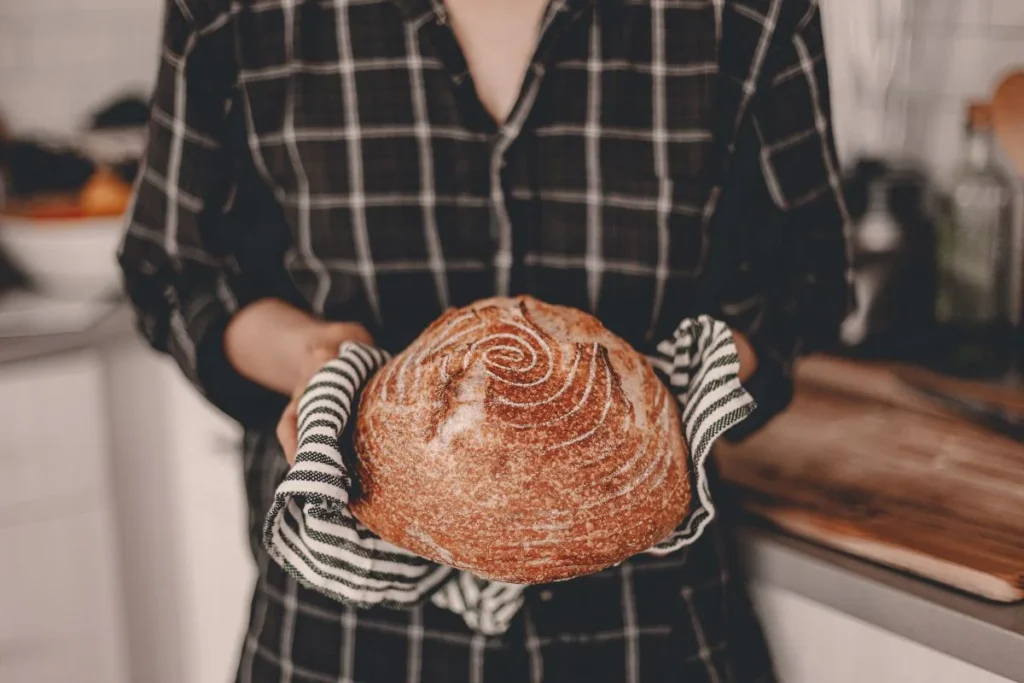
Myth: Does Active Dry Yeast Change the Flavor of Sourdough Bread?
Many bakers are concerned about how active dry yeast affects the flavor of sourdough bread. It’s often thought that using active dry yeast will dramatically alter sourdough’s unique taste, but the truth is a bit more subtle.
Debunking the Myth: How Active Dry Yeast Influences Sourdough Bread’s Flavor
In most cases, adding active dry yeast doesn’t significantly change the flavor of sourdough bread. The main flavors in sourdough come from the fermentation process, the type of flour you use, and the unique characteristics of your sourdough starter.
While active dry yeast helps with leavening and the bread’s texture, it doesn’t have a big impact on flavor. The sourdough culture in your starter, with its mix of wild yeast and lactic acid bacteria, remains the primary flavor driver.
To keep that classic sourdough taste, it’s essential to use active dry yeast in moderation. When used sparingly, it can improve your baking experience by giving you a more predictable rise without sacrificing the tangy flavor that sourdough fans love.

How To Use Active Dry Yeast in Sourdough Starter Step by Step
While many purists believe in the power of natural fermentation when making sourdough bread, there are scenarios where using active dry yeast in your sourdough starter can be a practical choice.
If you’re interested in harnessing the advantages of both methods, here’s how to incorporate active dry yeast into your sourdough starter:
- Choose the Right Amount: The key to successfully using active dry yeast in your sourdough starter is moderation. Start by determining the quantity of active dry yeast you want to add. For most recipes, a quarter to half a teaspoon of active dry yeast for every 500 grams of flour in your recipe is a reasonable guideline. Adjust this based on your preferences and the desired rising time.
- Dissolve the Active Dry Yeast: To ensure even distribution and activation, dissolve the selected amount of active dry yeast in a small amount of warm water. The water temperature should be between 105°F to 110°F (40°C to 43°C). Let the yeast mixture sit for a few minutes until it becomes frothy, which indicates that the yeast is active.
- Add to Your Starter: Once the active dry yeast is activated, gently stir it into your sourdough starter. Make sure your starter is at room temperature, as this aids in the fermentation process. Stirring it in thoroughly ensures an even distribution of yeast throughout the starter.
- Incorporate Into Your Recipe: Now, proceed with your sourdough recipe as usual, incorporating your starter with active dry yeast. Keep in mind that the addition of active dry yeast will significantly reduce the rising time, so be prepared to adjust your fermentation and proofing periods accordingly.
- Monitor and Adapt: Throughout the baking process, keep a close eye on your dough. The presence of active dry yeast may require you to fine-tune the timing and temperature to achieve the desired flavor and texture. It’s essential to experiment and adjust to find the right balance that suits your preferences.
While using active dry yeast in your sourdough starter can expedite the process and provide consistent results, it’s essential to remember that this method will alter the traditional sourdough flavor.
Will Active Dry Yeast Destroy My Sourdough Starter | Final Thoughts
In conclusion, the connection between active dry yeast and your sourdough starter can be a bit tricky, with some common misunderstandings.
When you add active dry yeast to your sourdough starter, it can help speed up the rising process, make your loaves more consistent in size and texture, and make sourdough baking easier, especially if you’re new to it. It’s a handy tool in specific situations, like when your sourdough starter isn’t very active or when you’re in a hurry.
But it’s crucial to use active dry yeast sparingly to avoid changing the unique flavor of traditional sourdough. The main taste of sourdough bread comes from the special qualities of your sourdough starter and the fermentation process, not from the active dry yeast.
While this method can offer convenience and reliability, it might not please the die-hard traditionalists who prefer the slower fermentation process.
Ultimately, whether you decide to add active dry yeast to your sourdough starter depends on your baking goals and personal preferences. By understanding the science and clearing up some of the misconceptions about this practice, you can make informed choices to improve your sourdough journey while preserving the essence of this beloved bread.
Lindsey Mackenzie
Warning: Undefined variable $post in /home/u154887947/domains/bakesmartly.com/public_html/wp-content/plugins/gourmet-core/templates/blocks/gourmet-core-block-post-related.php on line 140
Warning: Attempt to read property “ID” on null in /home/u154887947/domains/bakesmartly.com/public_html/wp-content/plugins/gourmet-core/templates/blocks/gourmet-core-block-post-related.php on line 140
About me
Hi there! I’m Lindsey Mackenzie, the founder of Bake Smartly. Baking has been my passion since childhood, growing up in my father’s bakery. With Bake Smartly, I’m excited to share my love for all things sweet and savory. Join me on this delicious journey as we whip up scrumptious treats and sprinkle joy into every bite!

